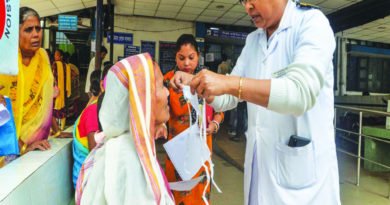The new hotspots
With a 40-50 per cent surge in the novel Coronavirus cases over the last 10 days, Tier-II and Tier-III cities are at risk of a swamp
While our metros battle the COVID-19 spiral by stepping up testing and early detections to arrest fatalities, it is the surge in hotspots in Tier-II and Tier-III cities that is a new source of worry. With a ban on inter-State movement during the lockdown, one had just about slowed the trajectory of the novel Coronavirus, not halted it. But now that traffic has been resumed, primarily for sustaining livelihoods and the homecoming of returnees — be it migrants or the jobless who are unable to sustain lives in the big cities — there has been an alarming rise in the number of cases in satellite towns and smaller cities across the country between June 3 and 13. And if the disease burden multiplies here, that would be partly due to the fact that these places lack the infrastructure, expertise, supplies or the resources in an emergency scenario. And with all the attention currently focussed on metros, where the existing infrastructure is falling short of the viral bulge, the mind boggles to think what would happen if this secondary manifestation of the disease swamps the nation. Take the case of Gurugram, which has seen a rise of more than two and a half times in the 10-day period between June 3 and 13. With a 161.51 per cent increase, it has registered the highest spike in the country till date. Gurugram’s doubling rate came down from 36 days in the last week of April to just seven days in May and June — the highest among the 20 worst-affected districts in the country by caseload. On an average in the last 10 days, it has been reporting close to 200 cases every day. Test Positivity Ratio, too, stood at a staggering 45.6 per cent on June 12. When calculated, this means one in every two people tested was positive. Likewise, death rates, too, have jumped — from three at the end of May to 25 on June 13. Noida has reported a sudden surge in cases over the last week or so, having contained it significantly earlier. With 599 cases being registered on June 3 alone, Faridabad’s case count is 1,086. The number of fatalities has also grown three and a half times this month and risen to 28. Countrywide, Vadodara, Solapur and Guwahati are among the top 15 cities where there has been a 40-50 per cent surge over the last 10 days. This spiral is so racy that State Governments are suddenly at their wits’ end about taming it with timely intervention. Guwahati, Assam’s capital, accounts for half of the State’s 4,000 cases and doesn’t have enough capacity yet. Vadodara is recording an average of 50 infections every day. The problem with even smaller cities is that medical facilities at the local level are anyway compromised and they have to rush to the bigger cities for availing care.
Now that the virus map looks fairly uniform across the country, every State and city needs a similar protocol. All have to add new beds, convert every enclosure and institutional space, increase capacity of intensive care units, work in tandem with private hospitals, procure life-saving ventilators, organise mobile units for resuscitating waiting patients with oxygen and recruiting medical practitioners and volunteers. But most importantly, the testing mechanism should be robust and swift for they can control a slide only when they test early enough and go aggressively after assessing symptoms. India has only 0.8 doctor and 0.7 hospital bed for 1,000 people, according to a World Bank report. Compare that to South Korea, which has 11.4 hospital beds per thousand. Given these figures, the hinterland has no option but to run faster than the virus. Where are the resources though?
Source: The Pioneer




